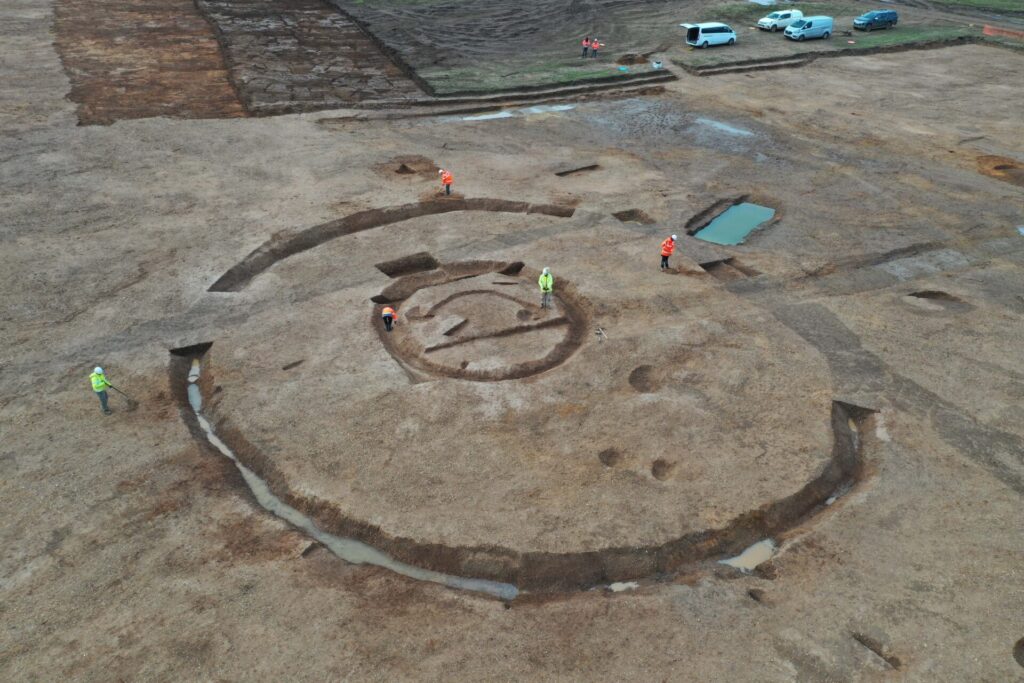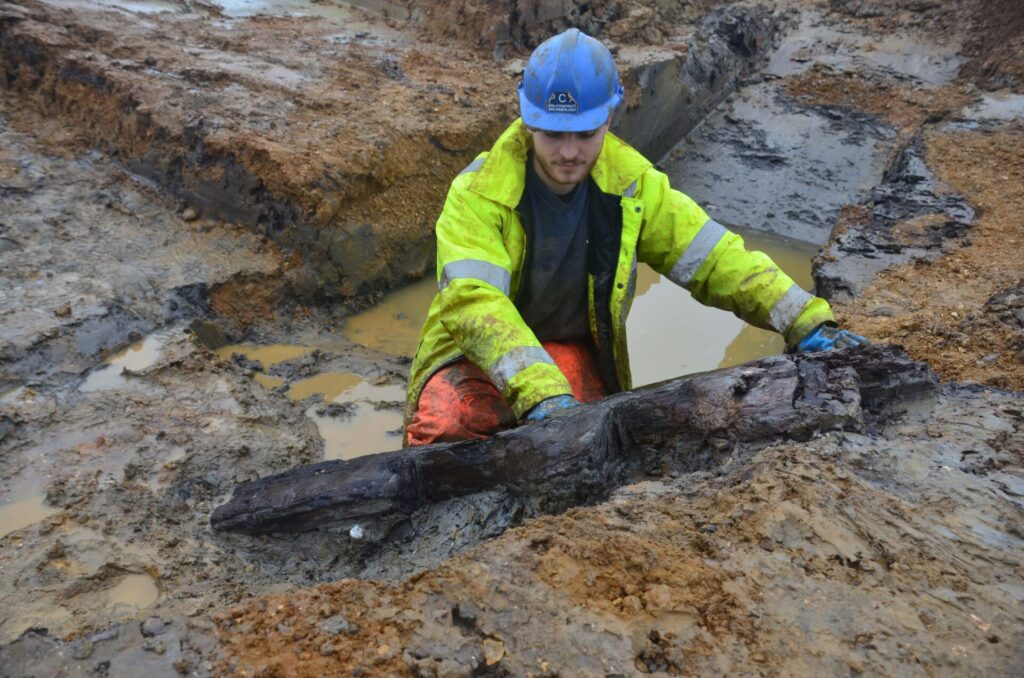
The CAS Autumn Conference will take place on Saturday and Mark Hinman would like to invite you to his final event as conference secretary – non members are welcome!
WHEN: 18th November 2023 @ 10:30 am – 4:45 pm
WHERE: Law Faculty, Sidgwick Site, Lecture Theatre LG17, The David Williams Building, 10 West Rd,
Cambridge CB3 9DZ
Please click here to view the programme, break times and entry fees and to see a map for the venue.

.
Among an array of interesting topics, Tom Woolhouse will be giving a talk on PCA’s excavations at Lucy Cavendish College in Cambridge. Our work here, on the edge of the Roman walled town, confirmed the projected alignment of Akeman Street (pictured above), which led from Cambridge (Duroliponte) to the Roman ‘small town’ at Arrington Bridge on Ermine Street.
Refreshments and displays by local archaeology and history groups and a book stall, will be in the atrium to the lecture theatres.
If you need to use a lift to access the lower ground floor please ask at reception for someone to operate the lift for you. It requires a card to be inserted and takes a little time.









































